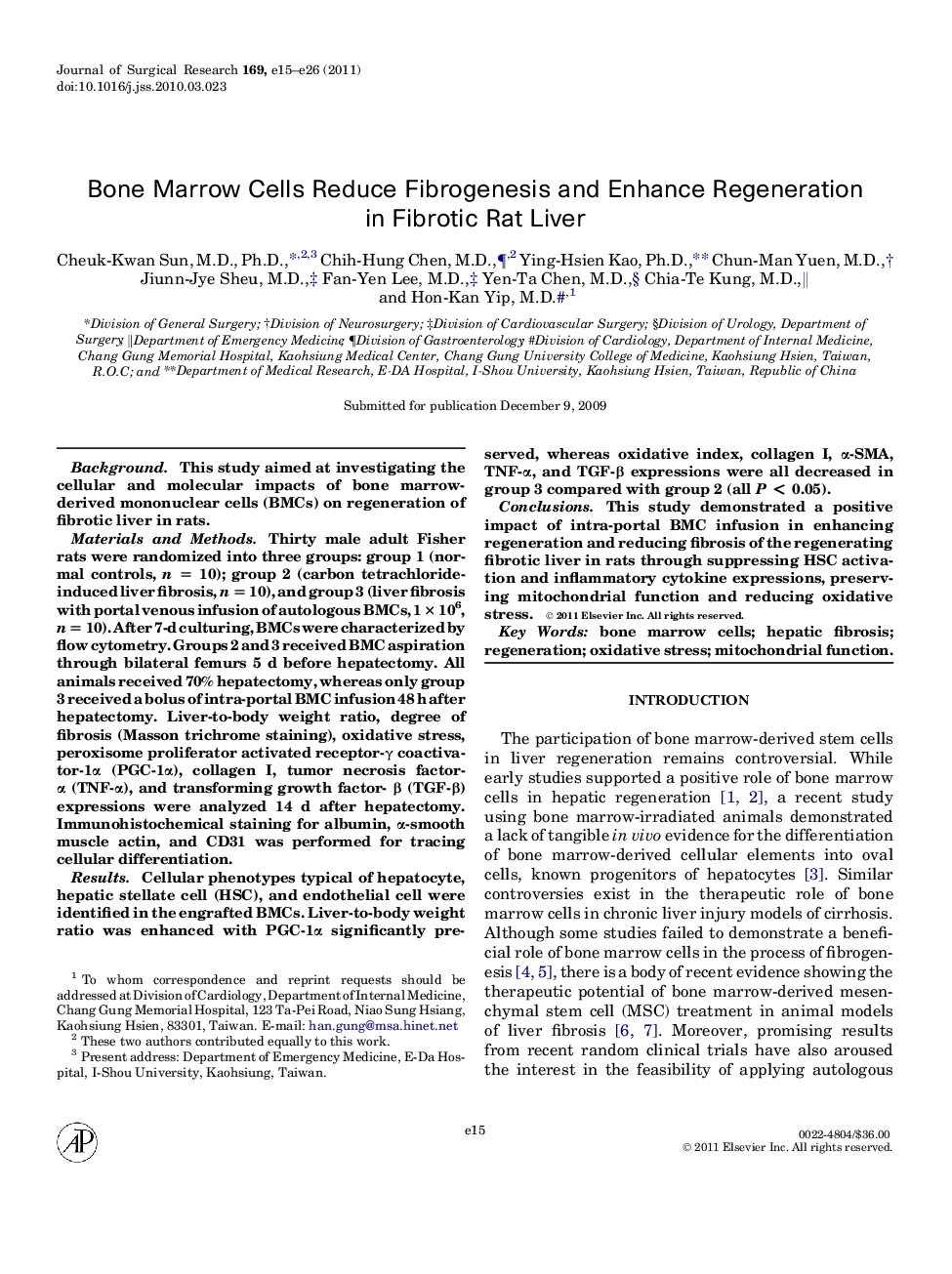| Article ID | Journal | Published Year | Pages | File Type |
|---|---|---|---|---|
| 4302235 | Journal of Surgical Research | 2011 | 12 Pages |
BackgroundThis study aimed at investigating the cellular and molecular impacts of bone marrow-derived mononuclear cells (BMCs) on regeneration of fibrotic liver in rats.Materials and MethodsThirty male adult Fisher rats were randomized into three groups: group 1 (normal controls, n = 10); group 2 (carbon tetrachloride-induced liver fibrosis, n = 10), and group 3 (liver fibrosis with portal venous infusion of autologous BMCs, 1 × 106, n = 10). After 7-d culturing, BMCs were characterized by flow cytometry. Groups 2 and 3 received BMC aspiration through bilateral femurs 5 d before hepatectomy. All animals received 70% hepatectomy, whereas only group 3 received a bolus of intra-portal BMC infusion 48 h after hepatectomy. Liver-to-body weight ratio, degree of fibrosis (Masson trichrome staining), oxidative stress, peroxisome proliferator activated receptor-γ coactivator-1α (PGC-1α), collagen I, tumor necrosis factor-α (TNF-α), and transforming growth factor- β (TGF-β) expressions were analyzed 14 d after hepatectomy. Immunohistochemical staining for albumin, α-smooth muscle actin, and CD31 was performed for tracing cellular differentiation.ResultsCellular phenotypes typical of hepatocyte, hepatic stellate cell (HSC), and endothelial cell were identified in the engrafted BMCs. Liver-to-body weight ratio was enhanced with PGC-1α significantly preserved, whereas oxidative index, collagen I, α-SMA, TNF-α, and TGF-β expressions were all decreased in group 3 compared with group 2 (all P < 0.05).ConclusionsThis study demonstrated a positive impact of intra-portal BMC infusion in enhancing regeneration and reducing fibrosis of the regenerating fibrotic liver in rats through suppressing HSC activation and inflammatory cytokine expressions, preserving mitochondrial function and reducing oxidative stress.
